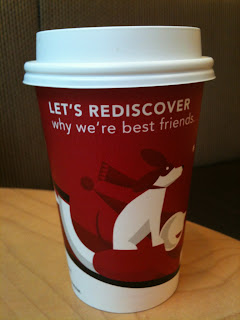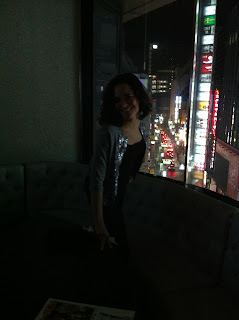
A few weeks ago Terry and I took the boys to Kamakura to do the Daibutsu hiking course, a 3.5km trail that snakes southwestward beginning at the Jochiji temple near Kita-Kamakura station, and winds up and around mountains and through woods, its path gnarled by exposed tree roots; at the end of the road is the big Buddha at Kotoko-in. I'd done this trail walk before, in the spring of 2008 with a friend (and posted about it
here) and then again last year with some other moms from school (though that time a few of us veered off course and ended up at the beach, ducking hawks, but never mind...) As for Terry and the boys, it was their first time. A couple of years ago the kids probably wouldn't have gotten through it without a lot of whining and feet-dragging, but they're 9 and 11 now, and so they managed, and seemed to really enjoy it, and it was really rather pleasant for all of us.

The course is not too arduous, but the terrain keeps things interesting. Lots of up and down.

It's good to walk with a big stick, I always say

one of the maps signposted along the way
At about the midpoint, we stopped for a rest in this little clearing not to far from Genjiyama-koen (a few minutes' detour, but worth it for the very impressive shogun statue, pictured below). We sat on tree stumps around a giant stone slab table, enjoying snacks and sunshine. Dylan wasn't quite sure about his rice cracker, which he selected from a plastic bin outside the little nearby shrine, leaving 100 yen in the dish beside it. It has some sort of white sugary coating on it.
Drinks all around! apple juice from the vending machine.
I purchased this stick 'o somethin' from a cart manned by two lovely old ladies who were pan-frying them in a big pot, because an old man told me to. "Healthy," he said, pointing at the, what, potatoes? mochi balls? He couldn't think what to call them, until then he did, and I googled it:
konnyaku, and it is in fact a type of potato, but more glutenous. Apparently native to Indonesia, introduced in Japan in the 6th Century as a medicine. Slightly crunchy, in that root veg sort of way. Fairly bland, even sauteed in soy sauce. (The ladies had a big ole pot they were heating them in.) Apparently the stuff is high in fiber, rich in minerals, low in calories. Well, the old man was pleased that I gave it a try.

The mighty Miramoto Yoritomo, Shogun from 1192-1199, the start of the Kamakura period

Dylan takes the lead (see tiny figure way beyond the other two)

What's this?! We came across this seemingly brand-new Garden Cafe, situated just off-course, at the same moment we thought the boys were about to fake total collapse...


Quick cure: tall glasses of Coke, with big fat wedges of lemon. Coffee for me, beer in a big stein for Terry. Onward!
Final stretch

The reward at the end: the Daibutsu, cast in bronze in the mid-13th century, and originally housed inside a temple, which was washed away in the tsunami of 1498. I always enjoy seeing the big guy. (I've posted better photos of him than this... click
here and scroll down.)


There are several clusters of Jizo statues on the grounds of the Hase-dera temple, not far down the road from the Daibutsu. Jizo, a bodhisattva (enlightened being) in Buddhism, is a protector of children, primarily those in limbo (unborn, miscarried, aborted etc. - a tad gruesome for such a merry looking fellow). These little hillside herds are totally worth checking out, and there's also a rest area with a view of the sea.

Some extra special bonsai were on display there that weekend.

















































